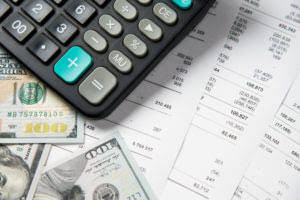Estimating Bad Debts Financial Accounting

So far, we have used one uncollectibility rate for all accounts receivable, regardless of their age. However, some companies use a different percentage for each age category of accounts receivable. When accountants decide to use a different rate for each age category of receivables, they prepare an aging schedule. An aging schedule classifies accounts receivable according to how long they have been outstanding and uses a different uncollectibility percentage rate for each age category. In Exhibit 1, the aging schedule shows that the older the receivable, the less likely the company is to collect it.
Percentage of Sales Method
This comprehensive guide will provide a detailed understanding of bad debt expense, including how to calculate it and the two methods involved. The typical column headers include 30-day windows of time, and the rows represent the receivables of each customer. Accounts receivable aging, as a management tool, can indicate that certain customers are becoming credit risks. It can be used to help determine whether the company should keep doing business with customers who are chronically late payers. But this isn’t always a reliable method for predicting future bad debts, especially if you haven’t been in business very long or if one big bad debt is distorting your percentage of bad debt. If you have $50,000 of credit sales in January, on January 30th you might record an adjusting entry to your Allowance for Bad Debts account for $3,335.
Lower Your Days Deduction Outstanding and Improve Your Cash Flow
- Businesses can use accounts receivable aging to decide whether to continue doing business with a certain customer or whether to require them to pay in advance or in cash.
- Therefore, an accounts receivable aging report may be utilized by internal as well as external individuals.
- An accurate estimate of the allowance for bad debt is necessary to determine the actual value of accounts receivable.
- As a portfolio analyst, it is important to accurately report the performance of a client’s portfolio.
- For instance, Customer A might routinely clear 100% of bills within days, but Customer B might have a tendency to default.
- This allowance can accumulate across accounting periods and may be adjusted based on the balance in the account.
At some point in time, almost every company will deal with a customer who is unable to pay, and they will need to record a bad debt expense. A significant amount of bad debt expenses can change the way potential investors and company executives view the health of a company. If your business relies on credit sales, you may be able to estimate your bad debt expenses before they occur. Make an allowance for bad debt (ABD), creating a pool of money to draw from when clients don’t pay. Accounting for bad debt beforehand ensures your business always has the cash it needs.

How to calculate bad debt expenses
The probability of a customer defaulting have also been given against each age group. These probabilities may be obtained from historical data, suitably adjusted for any circumstances that have changed since then. Estimated bad debt is simply the product of the probability of default and the receivable balance in each age group. The Ramp Card is an innovative corporate card, particularly aging of accounts receivable suited for LLCs, that combines automated expense management features with cashback rewards on purchases. It offers detailed spending insights with AI-powered recommendations for cutting costs, and integrates seamlessly with accounting software to simplify financial tracking and reporting. Cards come with no annual fees, foreign transaction fees, or card replacement fees.
Accounts Receivable Method
For many different reasons, a company may be entitled to receiving money for a credit sale but may never actually receive those funds. With an automated bookkeeping service, preventative measures happen behind the scenes. Automatic invoice reminders and cash withdrawals free up your time and let you concentrate on paying customers. Journaling credits and debits is a common bookkeeping practice for most businesses. You can usually include bad debt expenses with other debits in your expense accounts.

Calculating your bad debts is an important part of business accounting principles. Not only does it parse out which invoices are collectible and uncollectible, but it also helps you generate accurate financial statements. Accounts receivable is a permanent asset account (a balance sheet item) while sales is a revenue account (an income statement item) that resets every year. As a result, the steps you’ll take to estimate your AFDA in this method are different compared to the percentage of sales method. A journal entry must be made to adjust the financials for the anticipated risk.

Bad Debt Expense Definition and Methods for Estimating
- He has a Bachelor’s degree in Mechanical Engineering from Ohio State University and previously worked in the financial services sector for JP Morgan Chase, Royal Bank of Scotland, and Freddie Mac.
- On the balance sheet, the Allowance account will reflect the desired balance once the account balance is updated with the journal entry.
- When accountants decide to use a different rate for each age category of receivables, they prepare an aging schedule.
- All of the following statements regarding impairments are true except Group of answer choices an impairment is a permanent decline in an asset’s market value.
- When you finally give up on collecting a debt (usually it’ll be in the form of a receivable account) and decide to remove it from your company’s accounts, you need to do so by recording an expense.
However, there are different types of averages that can be used, each with its own strengths and weaknesses. By working out your company’s bad debt expense formula, you can better understand how much bad debt you are likely to incur and plan for it accordingly. We’ll show you how to record bad debt as a journal entry a little later on in this post. A collaborative accounts receivable solution—such as Versapay—uses automation and cloud-based collaboration technology to get customers, sales, and AR on the same page. Typically receivables are categorized into periods which are multiples of payment terms. For example, if a company sells at payment terms of n/20, the typical classification in aging schedule will be 0 to 20 days, 20 to 40 days, 40 to 60 days and so on.
The sum of the estimated bad debts from each category is fixed as the ending balance of allowance for bad debts account. Bad debts expense is calculated as provided in percentage of receivables method of bad debts estimation. This involves calculating the percentage of total credit sales that are unlikely to be collected. Factors such as customer experience and the credit policy in place are taken into consideration to arrive at this percentage.
Why Is It Essential to Track the Bad Debt to Sales Ratio?
The articles and research support materials available on this site are educational and are not intended to be investment or tax advice. All such information is provided solely for convenience purposes only and all users thereof should be guided accordingly. For information pertaining to the registration status of 11 Financial, please contact the state securities regulators for those states in which 11 Financial maintains a registration filing. The total of these figures represents the desired balance in the account Allowance for Uncollectible Accounts. Suppose a company recorded $20 million in net revenue during fiscal year 2021. The cause of the missed payment could be from an unexpected event by the customer and poor budgeting, or it can also be intentional due to poor business practices.
